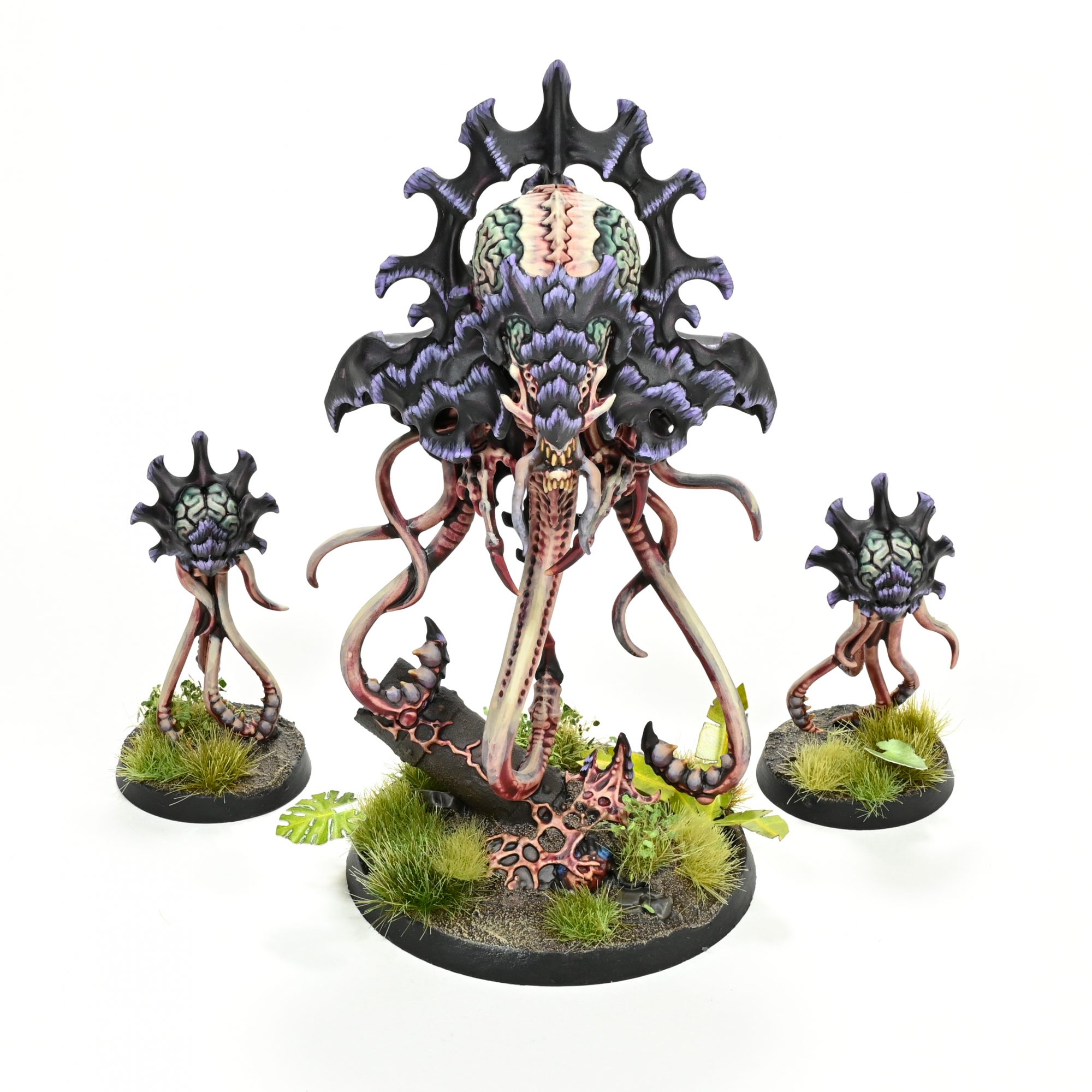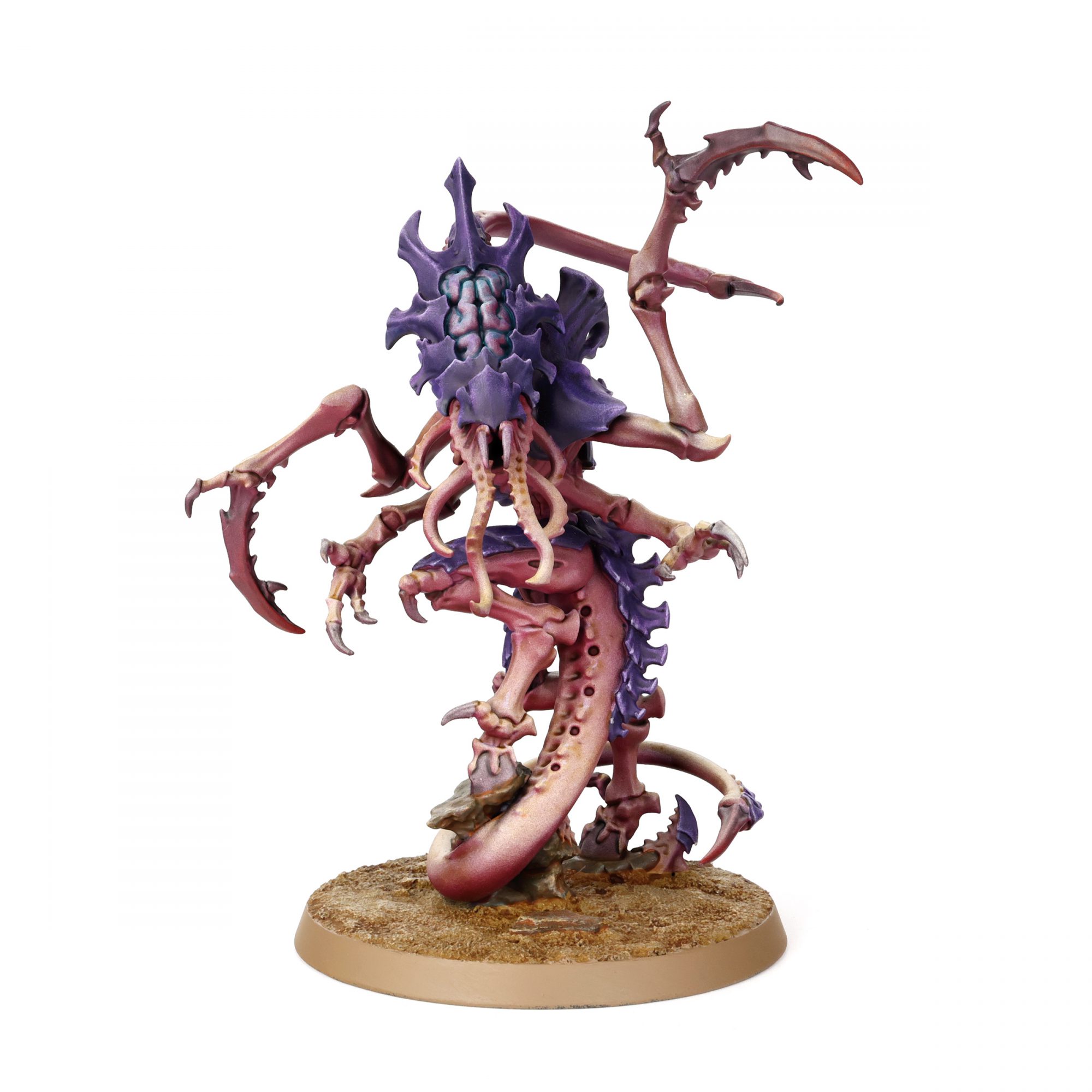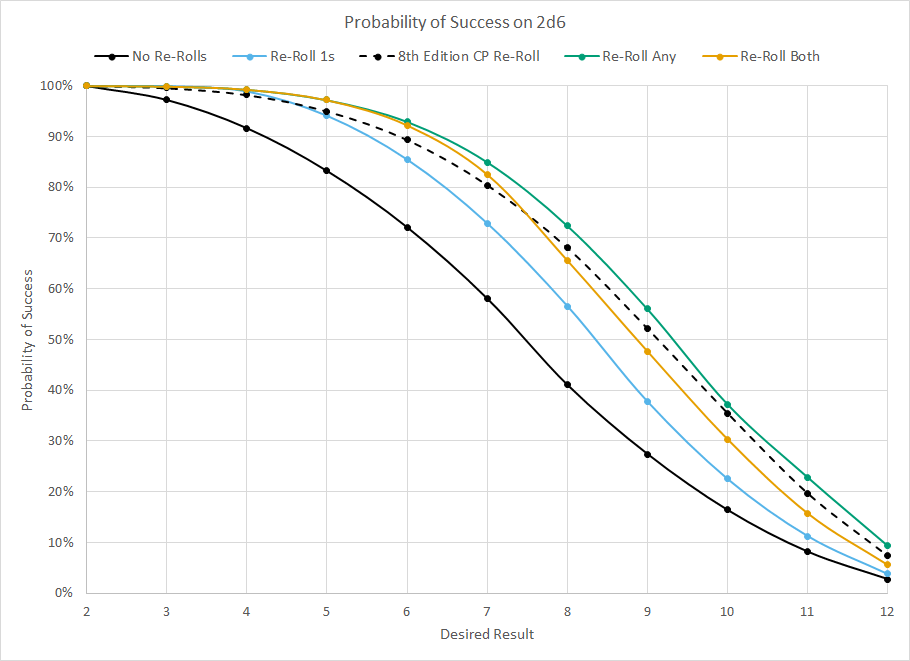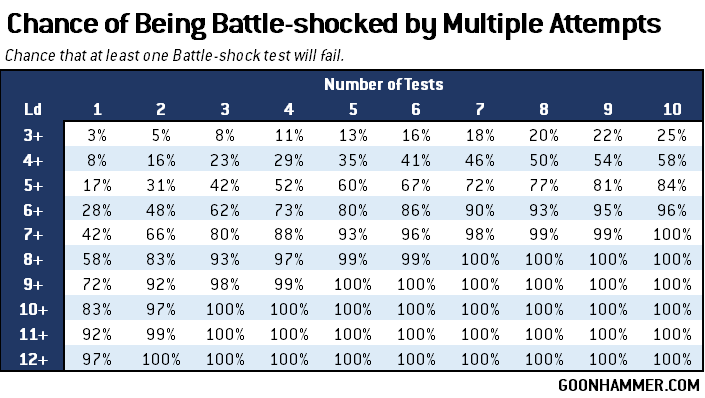This week’s Hammer of Math dives into an uncomfortable amount of chitin and acidic mucus to look at some of the Battle-shock effects and 10th Edition Codex: Tyranids.
Leadership and morale have always been an interesting part of Warhammer 40k, and for the most part it’s never been something that people paid much attention to. In 8th and 9th Edition any ability which modified a Leadership characteristic was immediately disregarded as useless or required some kind of gimmick to function. In 10th, the domain of Leadership tests now falls under the core concept of Battle-shock. Where in the past failing a morale test meant that fighters would start to panic and run in terror, the Grim Darkness of 10th Edition now means that units which fail a Leadership test collectively poop their pants and suffer three effects:
- A Battle-shocked unit has an Objective Control characteristic of 0.
- The controlling player cannot use Stratagems on a Battle-shocked unit.
- Battle-shocked units must take Desperate Escape tests if they Fall Back.
Avoiding a Battle-shock state requires passing a Leadership check on 2d6. Models have to make a Battle-shock test in the Command phase when they are Below Half-strength, but may also be forced to take tests by an ability or other circumstance, such as when a horrific alien monstrosity eats a model alive in front of their friends. Many abilities modify the Leadership characteristic of the target, which results in synergistic effects where one model degrades the unit before another hits them with effects that cause them to take a battle-shock test, sometimes repeatedly. This means multiple rolls of 2D6, for which we’ve shown various probabilities below, including the effects of re-rolls of various types on this outcome.
It’s important to note that Battle-shock resets in the controlling player’s Command phase, meaning that if you impose a Battle-shock effect on an enemy unit in their turn the effect won’t stop them from recovering on their turn before objective scoring is determined (though they will have to test again if they are below Half Strength). Still, turning off Stratagems like Overwatch and Armour of Contempt can be powerful effects when you’re preparing to devour a unit whole.

The Effects of Synapse
Codex: Tyranids heavily leverages Battle-shock tests as part of multiple abilities. The Synapse core ability allows Tyranid models in Synapse range to roll their Battle-shock tests on a 3D6 instead of 2D6. This dramatically improves their chances of passing a test, as the expected value of a roll of 3D6 is 10.5, compared to 7 for 2D6.
Forcing Tests
In terms of forcing Battle-shock tests and modifying the Leadership characteristic of the unit taking the test, Tyranids have a lot of options. Before we dive into these, it’s important to note that the Insane Bravery Stratagem can only be used in the Battle-Shock step of the Command phase, and so can’t be used on tests you force outside that step.
- Once per battle, in either Command phase, the player can unleash the army ability, Shadow in the Warp, and force every enemy unit on the battlefield to take a Battle-shock test. Note that this doesn’t have a rider on it to prevent multiple tests in a single Command phase, so it can cause a unit below Half-Strength to have to take two tests before scoring primary missions.
- A player using the Crusher Stampede detachment can use the Savage Roar Stratagem for 1 CP to force a test “just after” an enemy unit has selected its targets. Note that this may likely be after they use any Stratagems which affect the unit, as many of those are used when choosing the unit to Fight, not when selecting targets.
- The Vanguard Onslaught Detachment can give a character the Hunting Grounds Enhancement to force each enemy unit arriving from Reserves to make a Battle-shock test, provided you roll a 2+ for the unit.
- Vanguard Onslaught Detachments can also use the Surprise Assault Stratagem for 1 CP to force any enemy unit to make a Battle-shock test in the Fight or Shoot phase.
- Each Neurolictor can force one enemy unit within 12″ to take a Battle-shock test during your Command phase.
- If a Haruspex destroys an enemy unit in the Fight phase then every enemy unit within 6″ must take a Battle-shock test.
- After a Screamer-Killer makes its shooting attacks, one unit that was hit by the attacks must take a Battle-shock test with a -1 penalty.
- When a Mawloc is set up from Deep Strike it forces every enemy unit within 12″ to roll a D6. In addition to the mortal wounds, on a 5+ the affected unit must also take a Battle-shock test.
- Deathleaper forces all enemy units within 6″ to take a Battle-shock test in their Command phase if they are below Starting Strength, and the Leadership characteristic of models in a unit within 6″ is also reduced by 1.
- The Parasite of Mortrex forces one enemy unit in Engagement Range to take a Battle-shock test in the Fight phase.
- The presence of a Neurotyrant on the battlefield forces every enemy unit to take a -1 penalty on the Battle-shock test from Shadow in the Warp.
Many units capitalize on Battle-shocked targets.
- The Neurotyrant allows the unit it is leading to add 1 to the wound rolls against Battle-shocked units. If only it could lead Zoanthropes.
- The Neurolictor causes a Battle-shocked unit within 12″ to subtract 1 from the Hit roll, and allows friendly Tyranid models to add 1 to the Wound roll when they attack that unit.
- Zoanthropes force any unit which fails a Battle-shock test within 6″ to take D3 mortal wounds, and the Zoanthrope unit regains up to D3 wounds.

The Chance of Failing Against Multiple Tests
The potential for having to take multiple tests in a turn is very real when facing a Tyranids army, so it’s important to understand how the probability of getting at least one failed test changes when a given Leadership characteristic is subjected to multiple trials. To determine this we simply calculate the probability that every test will pass, and subtract that from one, i.e. the chance of failing a single test is equal to 1 – P(passing every test). The result is the probability that there will be at least one failure over the given number of trials.
What’s interesting about this chart is it shows how effective small changes in the targets Leadership characteristic are to multiple effects. A Leadership characteristic of 5+ is unlikely to fail most of the time until at least 4 attempts have been made; reduce that characteristic by 1 and you’re nearly at 50/50 after 2 trials. Combining Deathleaper and either a Neurotyrant with Shadow in the Warp or Screamer-Killers with their ranged attacks is an effective way to force a test that will have a dramatically improved chance of success.
Final Thoughts
Generally, your starting target is 6+, since most units in the game are working with either 6+ for Leadership. That means you’re only looking at a 50/50 chance of a failure on every pair of tests. Taking that to 7+ is huge – your odds jump to roughly two out of three, making the Neurotyrant’s ability very useful if you can leave your opponent with a bunch of half-strength units holding objectives. That said, the big wins don’t start to happen until you force a third test, when you start to hit 62% odds for 6+ models and 80% odds for 7+. That can be a lot of tests, and stacking all of them together in the same turn can be tricky.
Thanks for reading! If you have any questions or comments feel free to drop us a note in the Comments below or email us at contact@goonhammer.com. That’s also the best way to suggest topics for future articles.




